 |
| Category:
Air support |

|
|
|
|
|
|
Inflatable Aircraft of the
Great War |
|
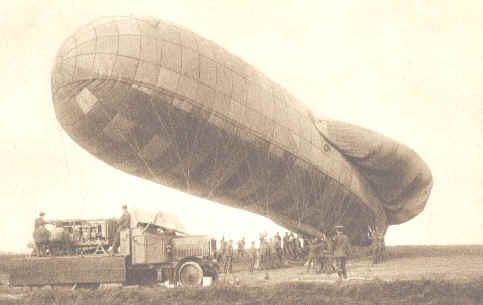
|
Allied
Observation Balloon on the Western Front. |
 Although observation balloons were also occasionally shot down by
small-arms fire, this was surprisingly difficult to achieve due to the
distances and altitude involved. Ordinary rifle and machine gun bullets
would pass relatively harmlessly through the hydrogen gas bag, causing
damage but not immediate destruction. Hits on the balloonist’s rather
flimsy woven wicker car would be an entirely different matter.
Although observation balloons were also occasionally shot down by
small-arms fire, this was surprisingly difficult to achieve due to the
distances and altitude involved. Ordinary rifle and machine gun bullets
would pass relatively harmlessly through the hydrogen gas bag, causing
damage but not immediate destruction. Hits on the balloonist’s rather
flimsy woven wicker car would be an entirely different matter.
When fighter aircraft became
more sophisticated, and could carry out the necessary aerobatics
required to safely target the observation balloon, many attempts were
made to shoot the observation balloons down. It was not until the
special incendiary machine gun bullets – the so-called Buckingham
Bullets, of which the flat-nosed .45 calibre was the most effective -
designed to bring down the Zeppelin airships over England, became
available on the Western Front in 1917, that any degree of success was
achieved. Dr
David Payne |
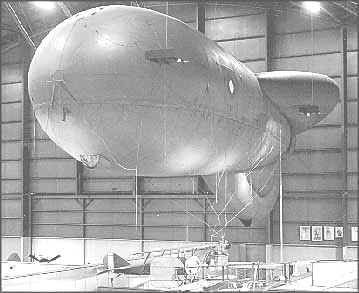 |
Caquot Type R
Observation Balloon The
observation balloon most used by Americans on the Western Front in
France during World War I was named for its designer, a French engineer,
Lt. Albert Caquot.
Measuring 92 ft. long and 32 ft.
diameter, it could stay aloft in winds as high as 70 mph.
The Caquot, with a capacity of 32,200
cubic ft., had sufficient lifting power for the mooring cable, basket,
two passengers, and necessary communications and charting equipment when
filled with hydrogen. |
| In
good weather, the balloon could ascend to over 4,000 ft. with operations
normally conducted between 1,000 and 4,000 ft. Depending on terrain and
weather conditions, balloon observers could see as far as 40 miles.
During their months at the Front, American balloon observers directed
artillery fire at 316 targets such as troop concentrations and supply
dumps, noted 11,856 enemy airplane sightings, 1,113 instances of
military traffic on railroads and roads, and 400 artillery batteries.
From USAF Museum http://www.wpafb.af.mil/museum/index.htm |
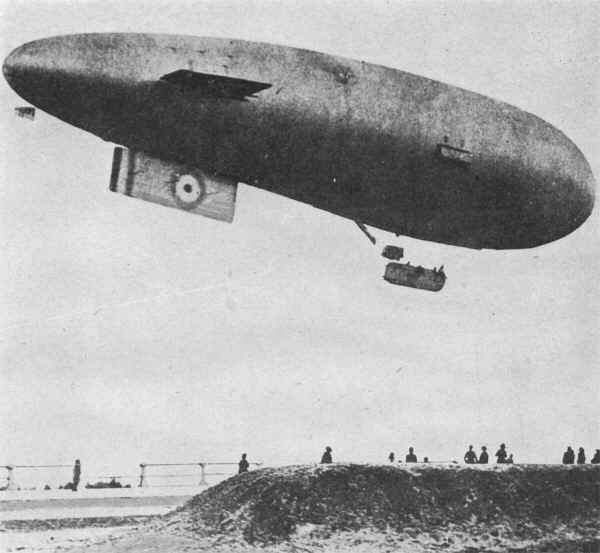 |
|
Very large inflatables
were used in the UK to warn of and guard against Zeppelin attack. |
|
German Inflatables |
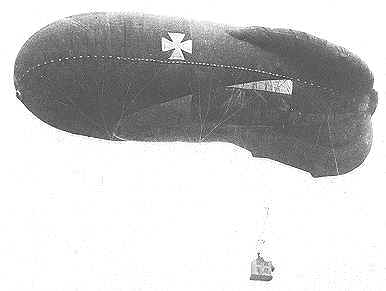 |
The Germans made good use
of observation balloons in several configurations. An early variety made
by Parseval-Sigsfeld and called "Drachen" (means either
"kite" or "dragon") had a single fin, low center,
and was totally cylindrical, with rounded ends.
The British called them
sausages, for obvious reasons. The balloon's shape gave it another
nickname, "Nulle" or "Testicle". The one pictured
above is a copy of a French Caquot design, the German designation was
the "Type Ae". |
| The
Caquot was tear-drop shaped, with three stabilizing fins. The improved
Caquot could ride higher, and fly in higher winds than the
Parseval-Sigsfeld, so it quickly replaced the Drachen, even among the
Luftschiffertruppen. The observer suspended in the wicker basket
typically had a wireless set, binoculars and one or two long-range,
cameras with him. Their job was to observe actions on the front and
behind it, to spot troop movements, unusual activity of any sort, and to
call down artillery fire onto worthy targets. They were targets of great
importance to the British HQ, especially before any sort of infantry
action, so squadrons were frequently ordered to target balloons.
This was especially risky as they were
well guarded with AA guns, long-range machine guns and a fighter CAP.
Getting to the balloon was easy, shooting it up was difficult and
getting away was very difficult. It required good nerves, quick
reactions, and an all round good pilot to fight off the CAP, avoid the
AA and mg fire, hit the balloon before it is pulled down and then get
away again. It was a rule of thumb with British pilots to never go after
balloons below 1,000 feet, the AA and mg fire was too dangerous.
The balloons could be
pulled down very quickly as they were tethered to a motorized winch, so
that once a fighter was spotted the balloon could be down in under a
minute. The secret was to sneak up on them some how. As the balloons were
filled with hydrogen they burned easily once they were pierced with tracer
bullets or bullets especially designed for Zeppelins. The balloon
observers were the only people routinely outfitted with parachutes, which
had been available since 1915.
From http://www.constable.ca/gballoon.htm |
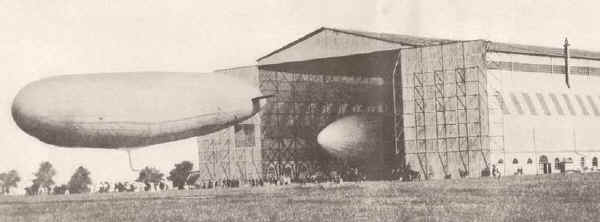 |
|
German
"sausage" balloons and hangar |
|
Zeppelin balloons: Germany's
best known inflatables |
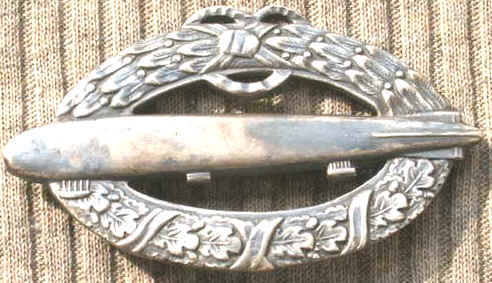 |
Zeppelin pilot's hat badge. |
 |
| Along with Germany's
involvement in The Great War came the Zeppelin. With this, the Count von
Zeppelin's dreams finally would be realized. His mammoth ships would
carry their deadly cargo from far from behind the battles in France and
bomb London itself. Initially, there was no defence to put against these
raids. The Zeppelins would leave Germany at dusk and arrive over England
by the cover of night. Cities could be easily spotted by their street
lights and the bombs would be dropped. The Zeppelins would then turn for
home and arrive before dawn.
Often English pilots would pursue the
Zeppelins across the sky but they had little chance of catching them.
The Zeppelins would be at a considerable altitude and the Zeppelin's
cruising speed was often comparable to that of the aeroplane chasing it.
To make matters worse, if a pilot did manage to catch up to the airship,
the Zeppelins were bristling with machine guns.
Only later in the war did the tide
turn against the Zeppelins. New planes with more powerful engines were
built that could catch the midnight marauders. These new planes also
carried a new weapon that would exploit the Zeppelins Achilles' heel:
incendiary ammunition. Bullets laced with phosphorus would burn with a
hot flame that could easily set the massive volume of hydrogen aflame.
When a Zeppelin burned, eye witnesses said that it would light the night
sky.
| The Germans tried to
counter this by making new high-flying, super light weight Zeppelins
called "Height Climbers" and by painting the undersides
black. The idea was that if a Zeppelin could fly high enough, it
could exceed the operational altitude of the British planes and
its black underside would be less likely to be spotted against the
night sky. These were both good ideas, but by then, the time of
the Zeppelin as a military front-line weapon was over. |
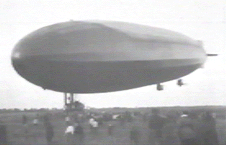 |
|
|
http://www.ciderpresspottery.com/ZLA.html |
|